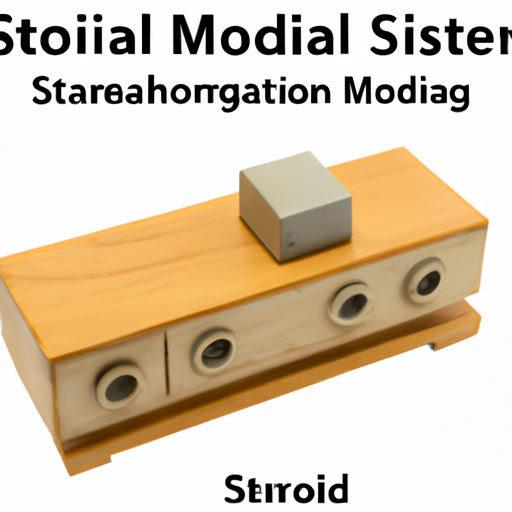Title: Exploring the Mainstream Models of Solid State Relays

1. Zero-Crossing SSRs (200 words) Zero-crossing SSRs are one of the most commonly used models due to their ability to minimize electrical noise and voltage spikes during switching operations. These relays are designed to switch the load on and off only when the AC voltage crosses zero, reducing the chances of electrical disturbances. Zero-crossing SSRs are ideal for applications that require precise control, such as heating systems, lighting control, and motor control.
2. Random Turn-On SSRs (200 words) Random turn-on SSRs are another popular model that provides faster switching speeds compared to zero-crossing SSRs. These relays can switch the load on and off at any point in the AC waveform, allowing for more precise control over the load. Random turn-on SSRs are commonly used in applications that require high-speed switching, such as robotics, industrial automation, and power supplies.
3. Instantaneous Turn-On SSRs (200 words) Instantaneous turn-on SSRs are designed to provide immediate switching as soon as the control signal is applied. These relays offer the fastest switching speeds among all SSR models, making them suitable for applications that demand rapid response times, such as high-frequency switching, medical equipment, and telecommunications.
4. Analog Input SSRs (200 words) Analog input SSRs are specifically designed to handle analog control signals, making them ideal for applications that require precise control over varying load levels. These relays can accept a wide range of input signals, allowing for smooth and accurate control over the load. Analog input SSRs find applications in areas such as temperature control, process control, and motor speed control.
5. Three-Phase SSRs (200 words) Three-phase SSRs are designed to handle three-phase AC power systems, making them suitable for applications that require control over multiple loads simultaneously. These relays offer reliable switching and protection for three-phase motors, heaters, and other industrial equipment. Three-phase SSRs are commonly used in industries such as manufacturing, HVAC, and power distribution.
6. High-Voltage SSRs (200 words) High-voltage SSRs are specifically designed to handle high voltage levels, typically above 600V. These relays provide reliable switching and isolation for high-power applications, such as electric vehicle charging stations, renewable energy systems, and high-voltage power supplies.
Conclusion (100 words) Solid state relays have revolutionized the field of electrical switching, offering numerous advantages over traditional electromechanical relays. The mainstream models of SSRs, including zero-crossing, random turn-on, instantaneous turn-on, analog input, three-phase, and high-voltage SSRs, cater to a wide range of applications across various industries. By understanding the features, applications, and benefits of these SSR models, engineers and technicians can make informed decisions when selecting the most suitable relay for their specific requirements.
Title: Exploring the Mainstream Models of Solid State Relays

1. Zero-Crossing SSRs (200 words) Zero-crossing SSRs are one of the most commonly used models due to their ability to minimize electrical noise and voltage spikes during switching operations. These relays are designed to switch the load on and off only when the AC voltage crosses zero, reducing the chances of electrical disturbances. Zero-crossing SSRs are ideal for applications that require precise control, such as heating systems, lighting control, and motor control.
2. Random Turn-On SSRs (200 words) Random turn-on SSRs are another popular model that provides faster switching speeds compared to zero-crossing SSRs. These relays can switch the load on and off at any point in the AC waveform, allowing for more precise control over the load. Random turn-on SSRs are commonly used in applications that require high-speed switching, such as robotics, industrial automation, and power supplies.
3. Instantaneous Turn-On SSRs (200 words) Instantaneous turn-on SSRs are designed to provide immediate switching as soon as the control signal is applied. These relays offer the fastest switching speeds among all SSR models, making them suitable for applications that demand rapid response times, such as high-frequency switching, medical equipment, and telecommunications.
4. Analog Input SSRs (200 words) Analog input SSRs are specifically designed to handle analog control signals, making them ideal for applications that require precise control over varying load levels. These relays can accept a wide range of input signals, allowing for smooth and accurate control over the load. Analog input SSRs find applications in areas such as temperature control, process control, and motor speed control.
5. Three-Phase SSRs (200 words) Three-phase SSRs are designed to handle three-phase AC power systems, making them suitable for applications that require control over multiple loads simultaneously. These relays offer reliable switching and protection for three-phase motors, heaters, and other industrial equipment. Three-phase SSRs are commonly used in industries such as manufacturing, HVAC, and power distribution.
6. High-Voltage SSRs (200 words) High-voltage SSRs are specifically designed to handle high voltage levels, typically above 600V. These relays provide reliable switching and isolation for high-power applications, such as electric vehicle charging stations, renewable energy systems, and high-voltage power supplies.
Conclusion (100 words) Solid state relays have revolutionized the field of electrical switching, offering numerous advantages over traditional electromechanical relays. The mainstream models of SSRs, including zero-crossing, random turn-on, instantaneous turn-on, analog input, three-phase, and high-voltage SSRs, cater to a wide range of applications across various industries. By understanding the features, applications, and benefits of these SSR models, engineers and technicians can make informed decisions when selecting the most suitable relay for their specific requirements.